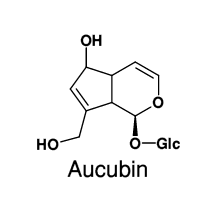EASTERN DECIDUOUS FOREST AND TALL GRASS PRAIRIE
COMMON NAME: Horsetail
GENUS AND SPECIES NAME: Equisetum spp.
HABITAT: wet areas, roadsides, fields
USE: The tea of sterile stems is used to clean wounds and aid in stopping bleeding. The poultice makes a good bandage. It had antioxidant antibacterial and anti-inflammatory effects
Preparation: To make the tea, add 1-2 teaspoons of dried horsetail to a cup of boiling water and allow to steep for 7-10 minutes. Strain out the tea and drink when warm. Drink one cup of horsetail tea 2-3 times a day.
To make a poultice, take 1/2 cup of horsetail then pour it into a strainer and place above boiling water. Once the horsetail is soft from the steam, place in cheesecloth and lay on place on body that needs healing and add cotton layers to keep warmth.
TALL GRASS PRAIRIE AND EASTERN DECIDUOUS FOREST
COMMON NAME: Common Plantain
GENUS AND SPECIES NAME: Plantago major
HABITAT: waste areas, lawns
SEASON: June-August
USE: The poultice is used to stop bleeding and soothe infections and cuts.
PREPARATION: To create poultice to place on wound, gather and clean plantain leaves. Place leaves in mouth and chew until mash is created. If there is the option, use mortar and pestle to cut, crush or bruise leaves. Take mash and place over wound and any inflamed area around it. Reapply and rewrap when necessary.
TALL GRASS PRAIRIE
COMMON NAME: Black-Eyed Susan
GENUS AND SPECIES NAME: Rudbeckia hirta
HABITAT: Bases of bluffs, openings of moist to dry upland forests, upland prairies, glades, pastures, roadsides, and open, disturbed areas
SEASON: May-October
USE: treats common cold, diuretic, earache, snakebites, minor cuts, sores, scrapes and swellings. Poultice is made for snakebites and an infusion is applied directly for a cut.
PREPARATION: hot infusion is made by scooping 1-3 tablespoons of dried herb into strainer. Heat 1 cup of water until it boils. Put strainer in cup and pour water over herbs and cover to keep oils from escaping. Follow by steeping for 15min-1hour and strain. Cold infusions are made by moistening bundled herb in cheesecloth and submerge cloth in cold water. secure and allow to infuse overnight.
Active chemical: EchinacosideChemical Structure: C35H26O30
TALL GRASS PARIRIE AND EASTERN DECIDUOUS FOREST
COMMON NAME: Yarrow
GENUS AND SPECIES NAME: Achillea millefolium
Season: May-November
Habitat: fields, pastures, prairies, roadsides, waste places, wooded areas
Uses: fever, fresh leaves for toothache, applied to skin to stop bleeding, insect stings, sweating, taken by mouth to reduce inflammation, healing of colds and fevers, digestion- diarrhea; will lessen pain and prevent infections
Preparation: can be made into a tea or tincture, but for large amounts of blood, flowers are crushed or chewed and applied, packed directly, and layered if desired.
Active chemical: Apigenin
Chemical formula: C15H10O5
(n.d.). Home | University of Maryland Medical Center. Horsetail | University of Maryland Medical Center. Retrieved August 28, 2015, from http://umm.edu/health/medical/altmed/herb/horsetail
(n.d.). Botanical.com. A Modern Herbal | Plantain, Common. Retrieved September 7, 2015, from http://www.botanical.com/botanical/mgmh/p/placom43.html






No comments:
Post a Comment